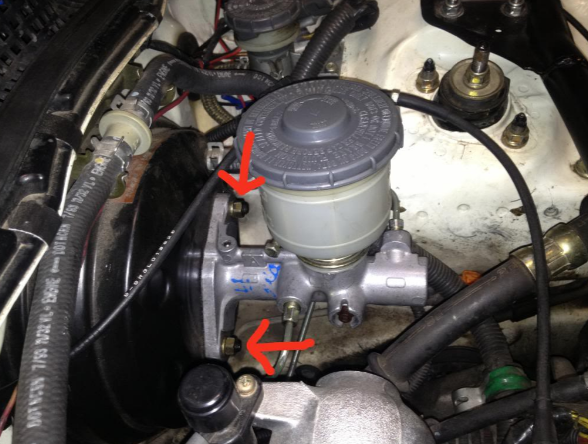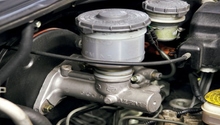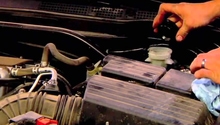Acura TSX 2009-2014: Frozen Brake Pedal Diagnostic
Instead of letting stiff brake scare you, find out a solution to your problem. Check out what causes your brakes to freeze.
This article applies to the Acura TSX (2009-2014).
Brakes have one job on your car, to safely stop you from moving. The brake system is made up of several components, that all work together using hydraulic fluid. Without any fluid in the system, the brakes themselves will fail, resulting in a completely dead pedal. However, when the fluid freezes or becomes contaminated, the pedal can actually become harder to press. Other issues that can cause stiff brakes include a damaged caliper or brake booster. Check out some common problems that can cause your brake pedal to become stiff.

Materials Needed
- Metric ratchet set
- Brake fluid
- Brake cleaner
- Floor jack
- Jack stands
Step 1 – Check your brake fluid
It might be too old.
Believe it or not, the older your fluid gets, the more likely it is to either thicken to the point where it freezes in the lines or clogs one completely. Brake fluid is usually neglected by most drivers, as it isn't seen as important as the other liquids on the vehicle. If your fluid hasn't been changed in more than three years, flush the master cylinder and pour in some new fluid. This problem becomes really apparent in colder environments.

(Related Article: How to Replace Brake Fluid - AcuraZine.com)
Step 2 – Check your caliper
They might be seized.
Ever heard the phrase that rust equals cancer on a vehicle? By normal standard, rust itself can not hold a car in place. However, if the piston or pin on a caliper becomes seized, the brakes will not budge and will remain shut. This will result in the car having to be towed, and the caliper replaced.

Step 3 – Check your brake booster
It could be broken.
You know that large balloon shaped object mounted behind the master cylinder? That is called a brake booster, and its main function is to soften the brake pedal to allow you to easily press it. When the booster fails, the brake pedal functions as if the car is off and makes it incredibly difficult to stop the car. To check the brake booster, do the following:
- While the engine is off, press down on the brake pedal.
- Turn the car on and see if the pedal slightly lowers.
- If the pedal remains in the same place, the booster is either damaged or has a vacuum leak.

Related Discussions
- Frozen Brake Pedal -AcuraZine.com
- Brakes "Stuck" - AcuraZine.com
- Replacing Master Brake Cylinder and Brake Booster - AcuraZine.com






